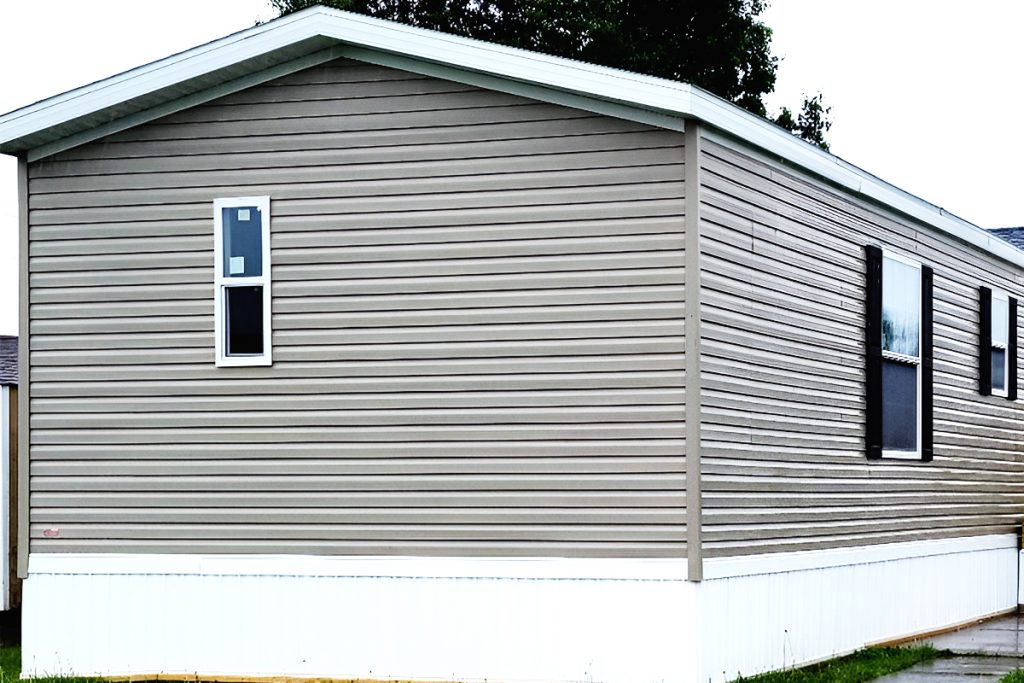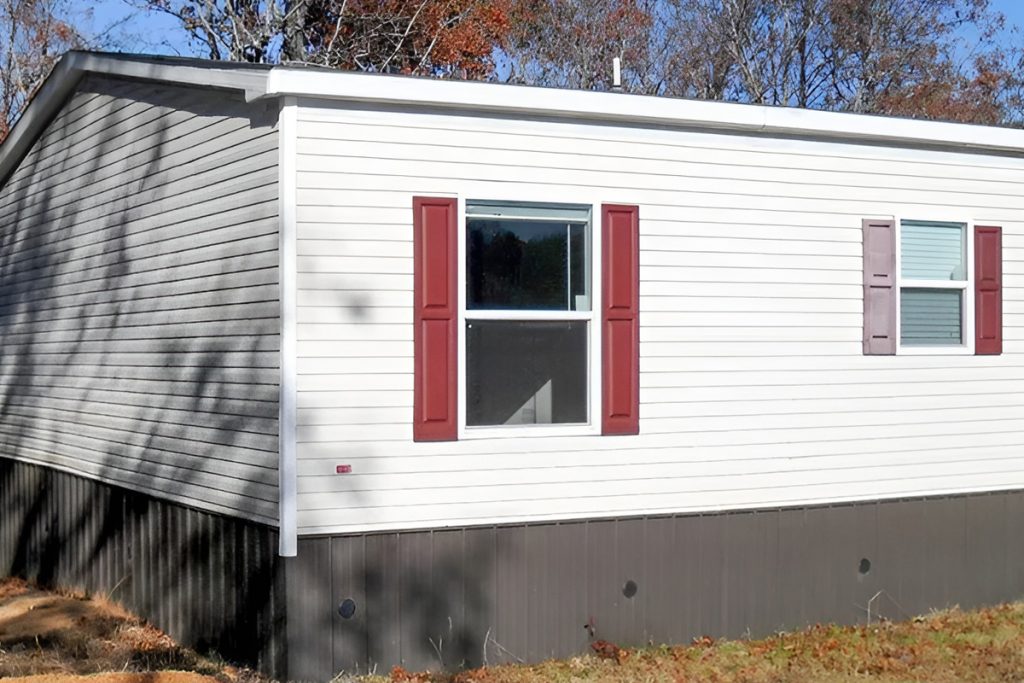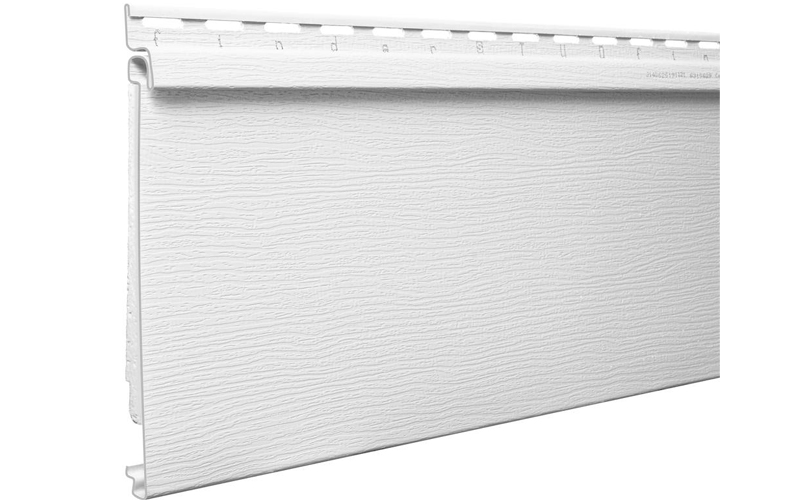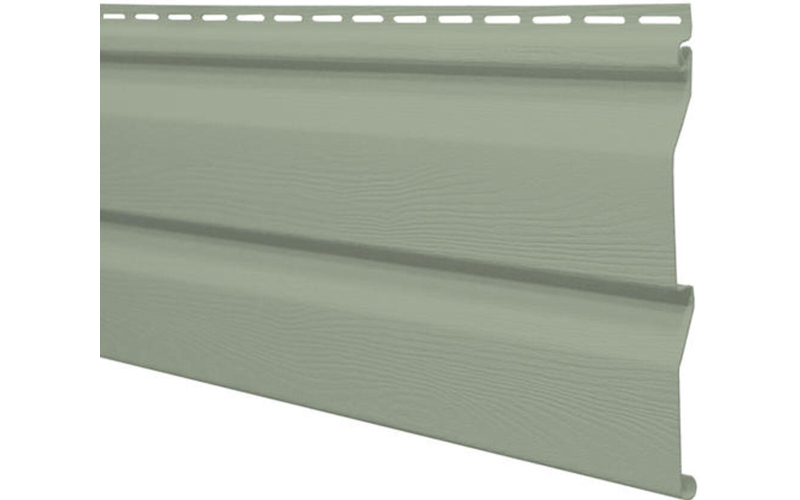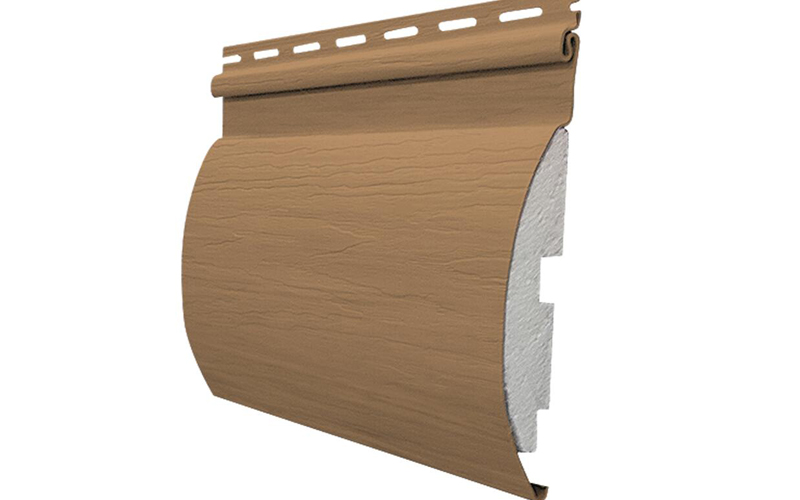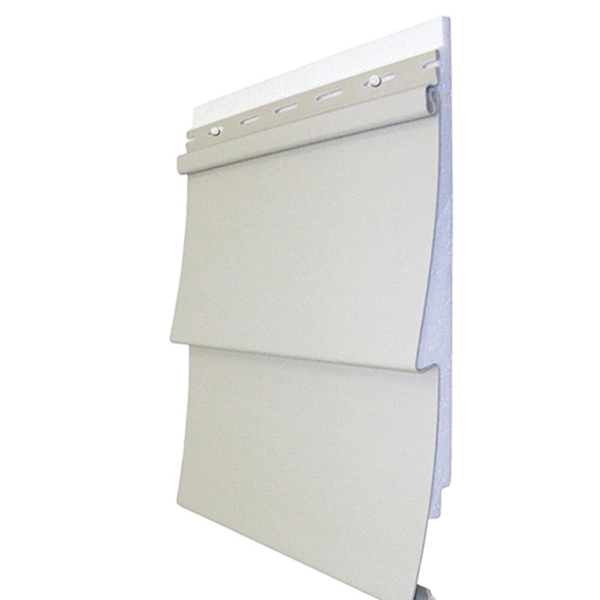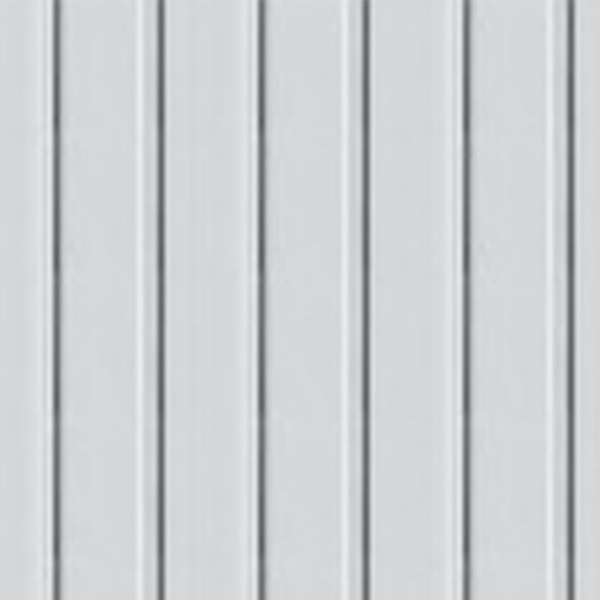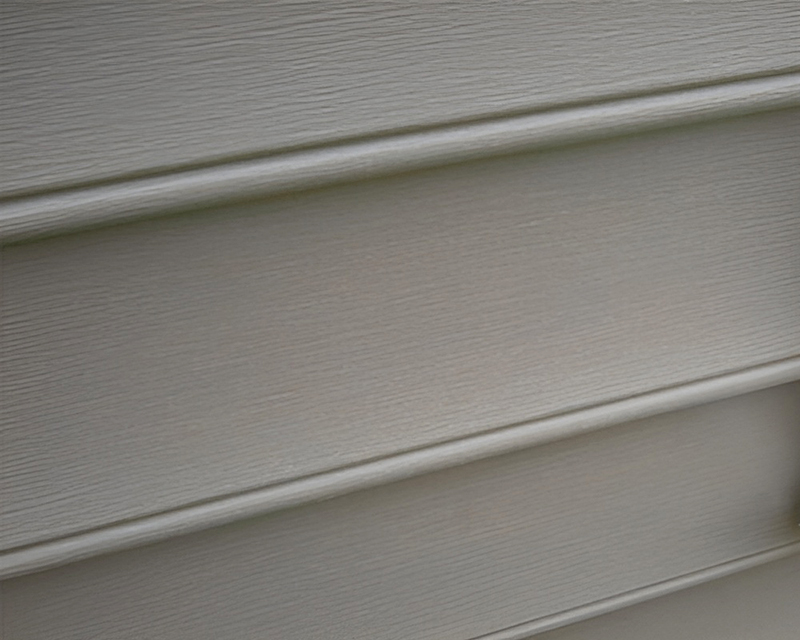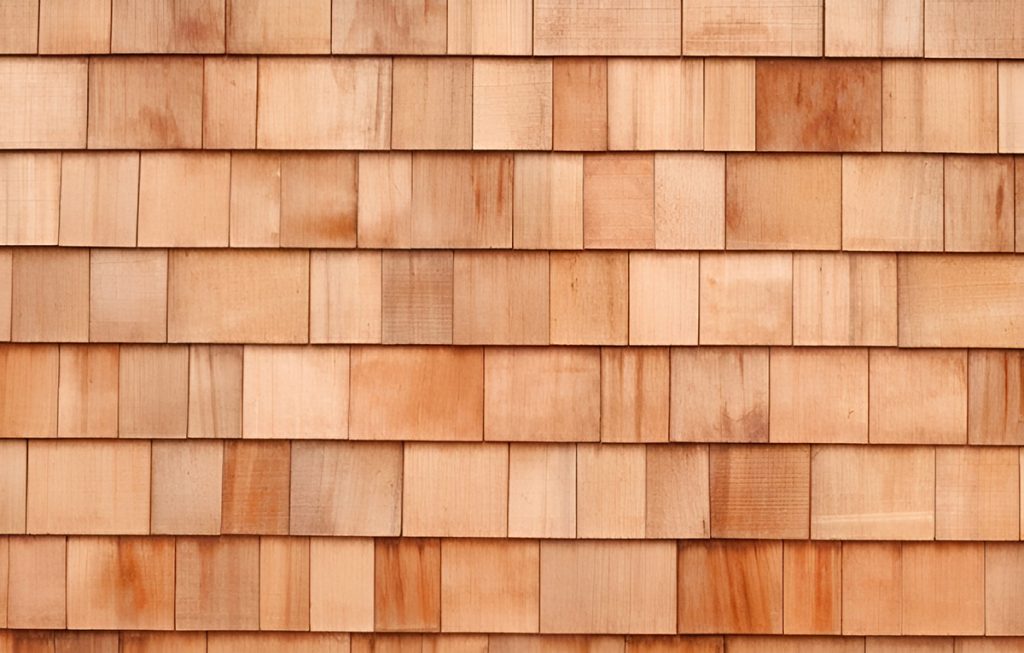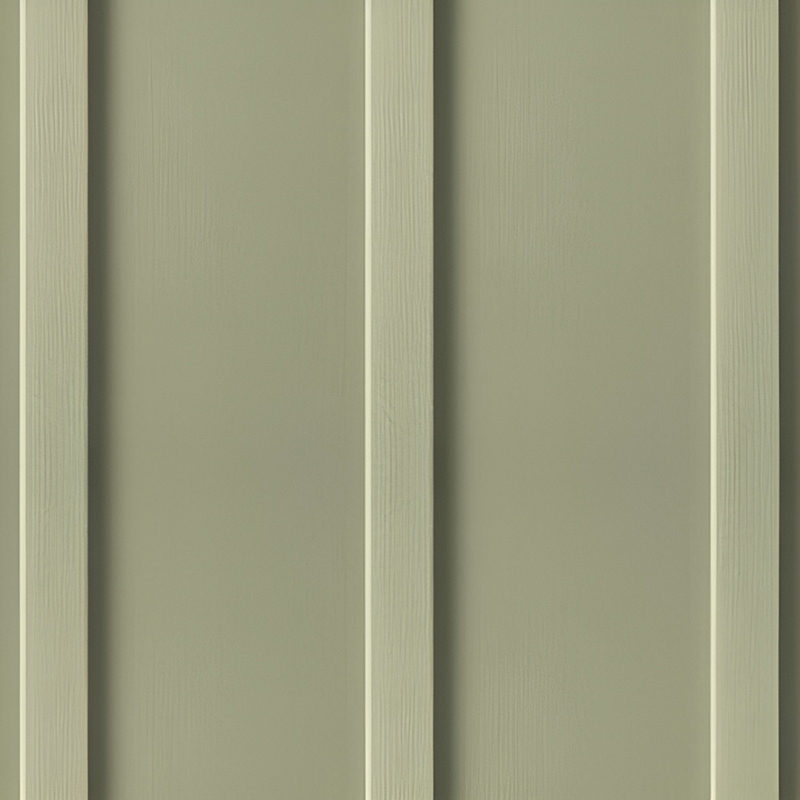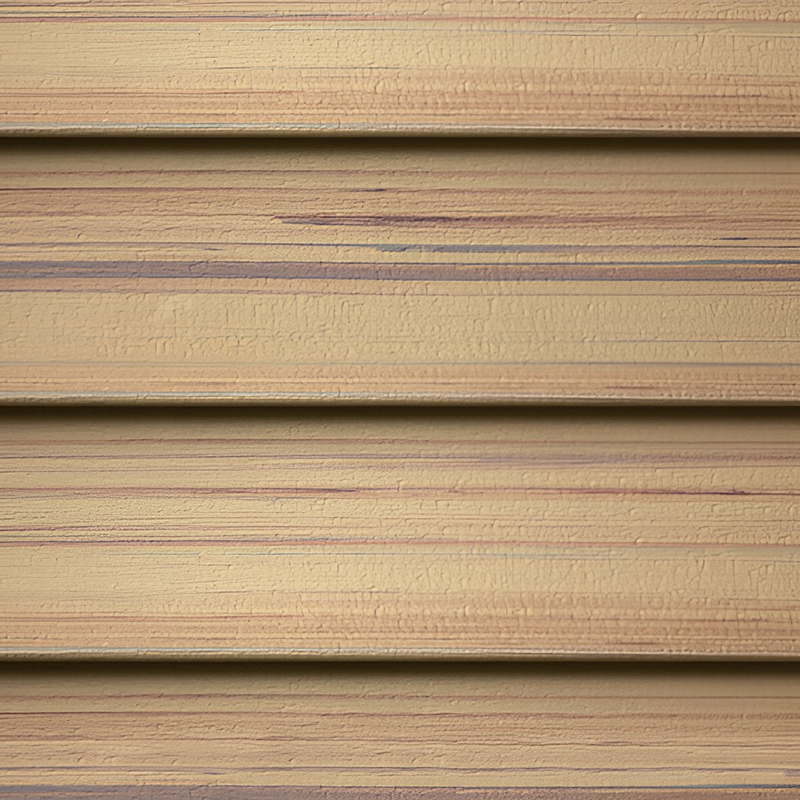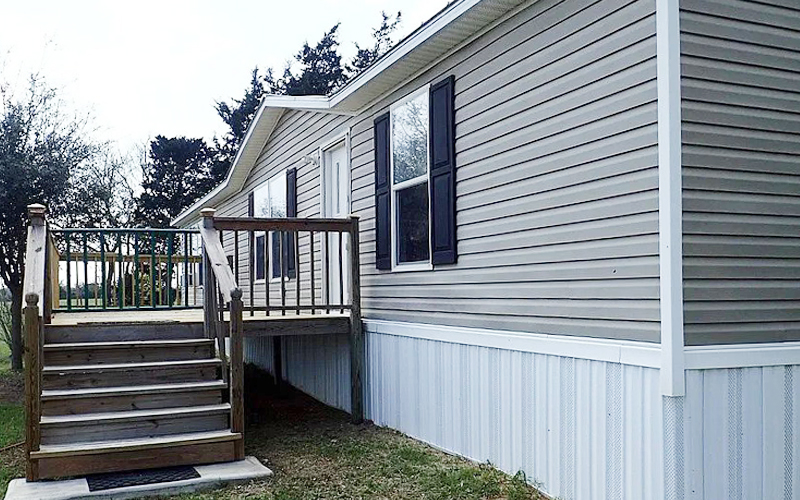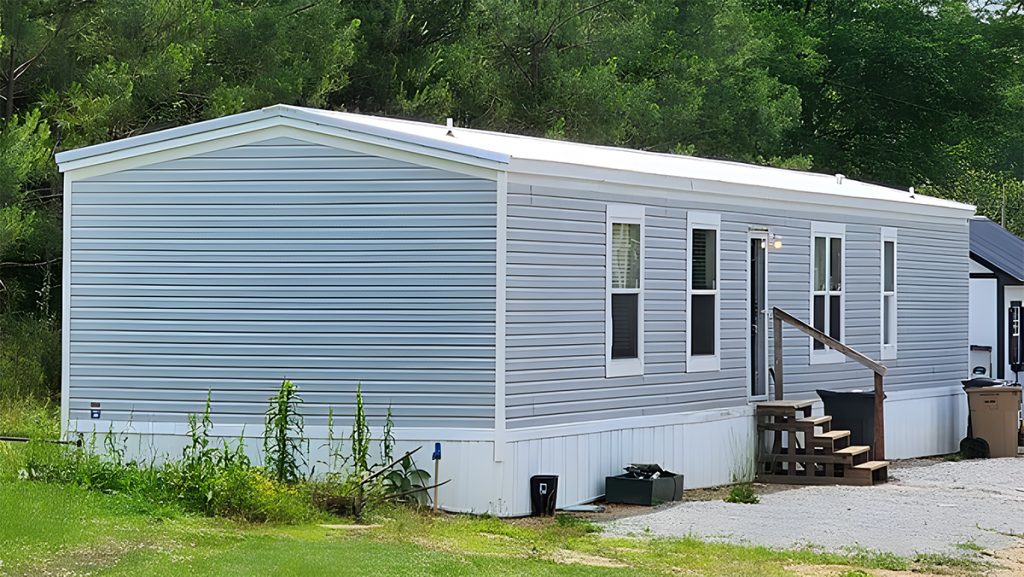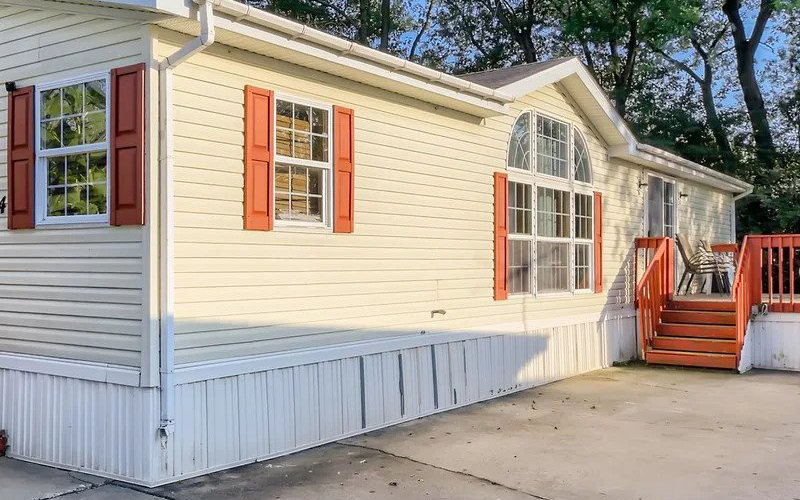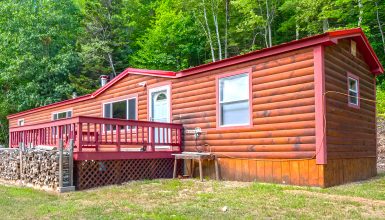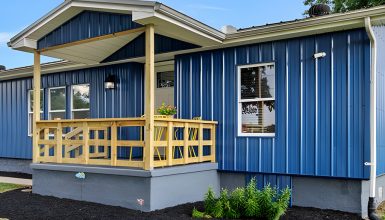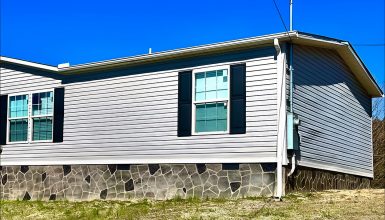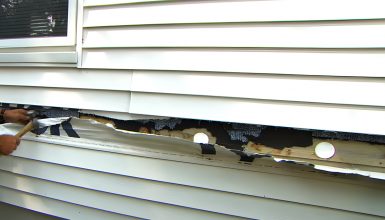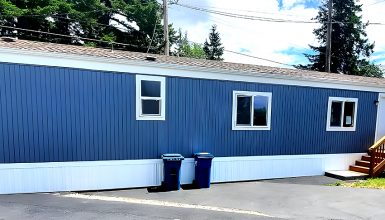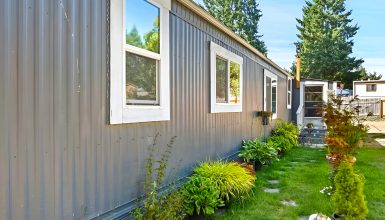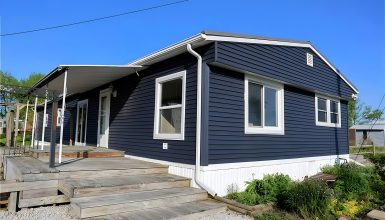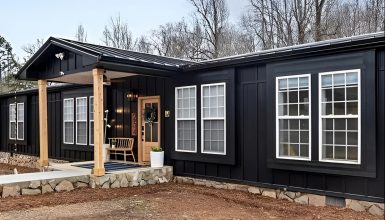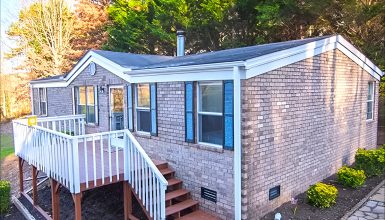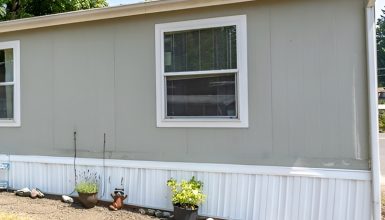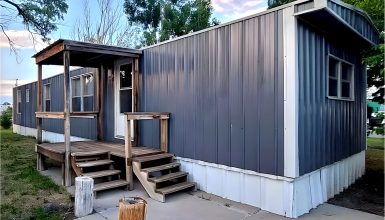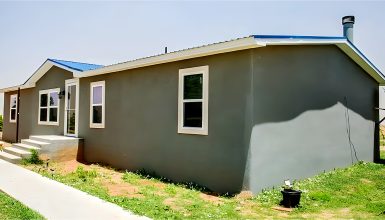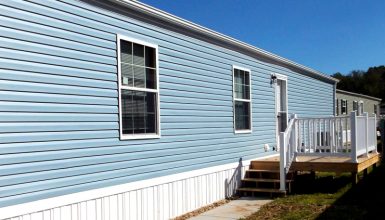Siding plays a starring role in the exterior design drama of your mobile home. Imagine it as the stylish overcoat protecting your house from harsh weather, insulating interiors, and amplifying curb appeal. Vinyl siding, with its durability and affordability, has been the popular choice of homeowners for years. It comes in a myriad of styles, each one promising to add a unique charm to your mobile home.
In the following sections, we’ll explore the top teen types of vinyl siding that have stolen the hearts of homeowners and designers alike. From classic Lap Vinyl to rustic Log Vinyl, we’re about to embark on an exciting journey to find your mobile home’s perfect fit. Ready? Let’s go!
What Is Vinyl Siding?
Vinyl siding is like the superhero of home exteriors. It’s made from PVC, polyvinyl chloride for our science buffs. This material is known for its strength, flexibility, and longevity. Think of it as that long-lasting, weather-resistant, super-durable jacket you love.
Why vinyl, you ask? It’s resilient, my friends! Rain, sleet, snow, or sun—vinyl siding is up to the challenge. It’s waterproof, meaning it doesn’t rot or rust and is impervious to insects. No more worrying about termites treating your home like an all-you-can-eat buffet.
Vinyl siding is also a champ when it comes to maintenance. It doesn’t need painting or staining every few years. Just a good cleaning now and then, and it stays looking fresh and vibrant. Imagine all the time and money you can save and spend on more enjoyable things!
But vinyl siding isn’t just about toughness and practicality. It’s got style too. It comes in various colors, textures, and styles to suit any design preference. Whether for a traditional, modern, or rustic vibe, vinyl siding is just right for you.
10 Best Vinyl Siding Styles for Mobile Homes
Choosing the perfect vinyl siding for your mobile home might seem daunting, but we’ve got you covered. We’ll go over the top types of vinyl siding:
1. Lap Vinyl Siding
Alright, let’s dive into our first contender: Lap Vinyl Siding.
Now, lap siding is all about traditional charm. It’s like that classic little black dress or a timeless leather jacket—always in style. Lap vinyl siding, also known as ‘clapboard,’ features long, broad planks laid horizontally, each overlapping the one below it. This design creates a shadow line that gives depth and character to your mobile home’s exterior.
One of the best things about lap vinyl siding is its versatility. Whether your home is cozier or more expansive, lap siding can adapt and shine. Plus, it comes in a variety of colors and textures. You can go with a smooth finish for a modern look or a wood grain texture for a more rustic feel. The choices are aplenty!
But it’s not just about good looks. Lap vinyl siding is built tough. It’s designed to withstand wind, rain, and even the occasional rogue frisbee. It’s also a breeze to maintain; with its longevity, it’ll stay in style as long as you love it.
Installation? Not a problem. Each plank is lightweight and flexible, making installing it easier, even in tricky corners or around windows. Plus, its overlapping design ensures a tight seal, keeping your home cozy and insulated.
Of course, like anything, lap vinyl siding has its drawbacks. It can be prone to fading and warping over time. But with proper maintenance and care, it can continue to be your mobile home’s best friend for years.
2. Vinyl Dutch Lap Siding
This style is a cheeky spin-off of the classic lap siding with a little twist. Literally! Dutch lap siding features a unique ‘bevel’ or ‘cove’ cut at the top of each plank. This cut causes each plank to slightly overlap the one below it at an angle, creating a distinctive shadow line. Think of it as a wave pattern across your home’s exterior. It adds a little drama, intrigue, and a lot of curb appeal.
Dutch lap siding is a design chameleon. It can fit right into a quaint country cottage aesthetic or add a touch of vintage charm to a modern mobile home. And the color options? Oh, they’re as vast as the horizon at sunrise. From warm, earthy tones to vibrant, lively hues, every palette has a shade of Dutch lap siding.
Now, let’s talk about durability. Dutch lap siding shares the identical resilience as its cousin, lap siding. It laughs in the face of harsh weather and sneers at pesky insects. It’s overlapping design and unique angle offer excellent protection from wind and water. It’s like your home’s very own bodyguard, dressed in style.
As for installation, Dutch lap siding is no different than its straightforward cousin. The planks are lightweight and easy to install. However, that fancy cove cut requires more precision, so you might want to consider getting a pro to do it.
On the downside, Dutch lap siding can also fade or warp over time, especially in intense heat or constant exposure to sunlight. But with a little TLC and regular maintenance, it can keep its charm for years.
3. Double Dutch Lap Vinyl Siding
Next on our list is a real showstopper: Double Dutch Lap Vinyl Siding.
Imagine the charm of Dutch lap siding. Now double it. That’s right, double Dutch lap siding takes the unique design of Dutch lap and ups the ante. This siding style features two ‘laps’ or ‘boards’ on a single panel. It’s like getting twice the design element in the same space.
Double Dutch is the perfect choice for those who love the detailed look of traditional wood siding but want the low maintenance and durability of vinyl. This siding gives your mobile home a handcrafted look without all the work. Plus, it’s available in various colors and finishes, ensuring you’ll find the perfect match for your style.
Let’s talk durability. Double Dutch lap vinyl siding is made for the long haul like its predecessors. It’s designed to withstand the elements and requires only minimal upkeep. So you can enjoy its beauty without breaking a sweat.
Installation-wise, it’s similar to other types of lap siding. The panels are lightweight, making them easier to install. But remember, it has double the laps, which means double the detail, so you’ll need a little extra precision during installation.
As for downsides, it shares the same ones as Dutch and lap siding. Extended exposure to harsh sunlight can cause some fading, and there’s a chance of warping over time.
4. Log Vinyl Siding
Now, let’s venture into the world of rustic charm with our next contender: Log Vinyl Siding.
If you’ve ever dreamed of a cozy log cabin but aren’t up for the maintenance of natural wood, this siding style is your dream come true. Log vinyl siding mimics natural logs’ warm, inviting look. You get all the aesthetic appeal of a log cabin with the durability and ease of vinyl. It’s like having your cake and eating it too!
Log vinyl siding gives your mobile home a touch of nature, creating an atmosphere of tranquility and warmth. And just because it’s rustic doesn’t mean it lacks variety. From the size of the ‘logs’ to the texture and color, you have plenty of options to customize the look.
Now, about durability. Like all vinyl siding, log vinyl is made to endure. It’s resistant to weather, insects, and rot. Plus, it doesn’t demand the intense maintenance routine that real wood does. No staining, no sealing, no problem!
Installation? It’s as straightforward as the others. The panels are designed to interlock for a secure fit, creating the appearance of seamless logs across your home’s exterior. But remember, it’s all about the details with log siding, so it’s best to have a professional handle it.
But here’s the flip side. Log vinyl siding can be more expensive than its counterparts. And while it does a great job mimicking natural logs, it might not fully convince the keen eye. Also, like other types of vinyl siding, it can be prone to fading and warping over time.
5. Insulated Vinyl Siding
Last but certainly not least, we introduce the ultimate comfort provider: Insulated Vinyl Siding.
Now, this one’s a bit different from the rest. Insulated vinyl siding is your classic siding with a superpower – a layer of insulation behind the siding. It’s like your home is wearing a snug, warm sweater. This insulation boosts your mobile home’s energy efficiency, helping keep it warm in winter and cool in summer. Talk about year-round comfort!
Looks-wise, insulated vinyl siding offers just as many options as its non-insulated counterparts. Whether you love the look of traditional lap siding or the charm of Dutch lap, an insulated version suits your style. Plus, a wide array of colors and finishes ensures you won’t have to compromise on aesthetics for efficiency.
As for durability, insulated vinyl siding is a tough cookie. It’s designed to withstand harsh weather and resist impacts, and yes, it’s also unfazed by pests. The added insulation even helps reduce outside noise, making your home a peaceful haven.
Installation is more involved with this type because you’re dealing with an extra layer. But don’t fret. The panels come pre-insulated, meaning they’re ready to install right out of the box. Still, having a professional install ensures the best results.
But here’s the thing, insulated vinyl siding can cost more upfront than non-insulated versions. However, remember this investment could save you money on energy bills in the long run.
As for other downsides, it shares the same potential for fading and warping as the other types, but regular maintenance can keep it looking good as new.
6. Vertical Vinyl Siding
Traditional siding runs horizontally, but why not mix things up? Vertical Vinyl Siding adds a modern touch to your mobile home’s exterior. It’s perfect for highlighting certain architectural features or adding height to your home’s appearance. And the best part? It’s just as easy to install and maintain as traditional siding.
7. Beaded Seam Vinyl Siding
Looking for something that screams classic charm? Beaded Seam Vinyl Siding might be your perfect match. This siding type features a rounded bead at the bottom of each panel, creating a shadow line that adds depth and elegant touch. It’s often found in historic homes but can add vintage style to your modern mobile home.
8. Cedar Shake Vinyl Siding
If you enjoy a rustic, natural look, consider Cedar Shake Vinyl Siding. It gives you the look of real cedar shingles without the high maintenance. It’s perfect for adding a bit of country charm to your mobile home. And the best part? It comes in a variety of colors and styles to fit your aesthetic.
9. Board & Batten Vinyl Siding
Bring a touch of farmhouse charm to your mobile home with Board & Batten Vinyl Siding. This style features alternating wide and narrow vertical panels, creating a pattern that can make your home stand out. It’s a great way to add visual interest to your exterior without going overboard.
10. Wood Grain Vinyl Siding
Love the look of wood but not the maintenance? Enter Wood Grain Vinyl Siding. It mimics the texture of real wood, adding warmth and a natural feel to your mobile home’s exterior. Plus, it offers all the perks of vinyl siding: it’s durable, low maintenance, and available in various colors.
Choosing the Best Vinyl Siding for Your Mobile Home
Let’s talk decision-making. You’ve got five excellent vinyl siding options in front of you. But how do you pick the perfect one for your mobile home? Here are some key criteria to consider:
- Thickness
First up is thickness. The thickness of vinyl siding is an important consideration when choosing the right type for your mobile home. Vinyl siding thickness is typically measured in millimeters. Thicker panels provide better protection against impacts and weather conditions. The thickness of vinyl siding can range from around 0.035 inches (0.9 mm) for thinner panels to about 0.055 inches (1.4 mm) for thicker panels. Suppose you live in an area with harsh weather conditions, such as high winds or frequent hail storms. Choose thicker vinyl siding to provide additional protection for your home.
- Style
Next up is Style. Do you want your mobile home to radiate traditional charm? Lap or Dutch Lap Siding could be the way to go. Love the idea of a rustic retreat? Log Vinyl Siding might just be your pick. Or maybe you’re a fan of unique, double-detail design? Then Double Dutch Lap Siding is calling your name.
- Durability
Next, consider Durability. All five vinyl siding types are designed to withstand weather and pests. But if you live in an area with extreme weather, Insulated Vinyl Siding might offer an extra layer of protection and comfort.
- Maintenance
Then there’s Maintenance. Vinyl siding is generally low-maintenance, but some types may require more TLC. Any kind will work if you’re up for regular cleaning and occasional touch-ups. But if you’d rather sit back and relax, choose a particularly resilient style like Lap or Insulated Vinyl Siding.
- Costs
Price is another big consideration. Costs can vary between types of vinyl siding, so it’s essential to know your budget. While Insulated and Log Vinyl Siding may be pricier, they could provide long-term energy costs and maintenance savings.
- Installation
And finally, think about Installation. While vinyl siding is typically easy to install, some styles require more precision. If you’re hiring a pro, this might not be a concern. But if you’re a DIY enthusiast, consider a type that’s simpler to install, like Lap Siding.
How Much Vinyl Siding Do I Need for My Mobile Home?
Calculating how much vinyl siding you’ll need is like planning for a big dinner—you want to ensure you have enough for everyone, or in this case, every part of your home. Let’s break it down.
First, let’s talk about the process. You’re essentially finding the total exterior surface area of your mobile home. It is done by multiplying the length by the width of your home, but remember, you’re doing this for all four sides. Here are some examples:
16×80 Mobile Home
Let’s start with a 16×80 mobile home. Here, 16 feet is the width, and 80 feet is the length. To find the area, we multiply these two numbers, giving us 1280 square feet. But remember, this is just for one side. Because mobile homes are rectangular, you’ll need to do this twice (once for each pair of opposite sides). So, 1280 square feet x 2 equals 2560 square feet. That’s how much vinyl siding you’d need for a 16×80 mobile home.
14×70 Mobile Home
Now, for a 14×70 mobile home. The width is 14 feet, and the length is 70 feet. Multiplying these together, we get 980 square feet for one side. Again, double this for both sides of the home, and you get 1960 square feet. So, you’ll need 1960 square feet of vinyl siding for a 14×70 mobile home.
But wait, there’s a catch! Windows and doors will take up some of this space. So, once you’ve calculated the area of your windows and doors, you’ll want to subtract that from the total siding needed. That’ll give you a more accurate figure.
Also, keep this in mind. It’s always a good idea to buy a bit extra to account for cutting errors or future repairs. Think of it as saving leftovers from that big dinner—you never know when they’ll come in handy!
Mobile Home Vinyl Siding Parts
Understanding the different parts of a vinyl siding system for mobile homes is essential for ensuring proper installation. Here are the main components of a vinyl siding system:
- Panels
These are the main sections of the vinyl siding that are installed horizontally on the exterior walls of the mobile home. They come in various lengths and widths and are designed to overlap each other for added protection against the elements.
- J-Channel
This trim piece finishes the edges of the vinyl siding around doors, windows, and other openings. It is shaped like a “J” and is installed vertically to create a finished edge.
- F-Channel
This is another type of trim piece used to secure the top edge of the vinyl siding to the soffit or fascia board. It is shaped like an “F” and is installed horizontally.
- Corner Posts
These are vertical pieces of vinyl siding that are used to cover the corners of the mobile home. They come in outside and inside corner options to provide a clean, finished look.
- Starter Strips
These are the first pieces of vinyl siding installed at the bottom of the exterior walls of the mobile home. They provide a secure base for the rest of the siding to be installed on.
- Soffit and Fascia
These horizontal surfaces run along the underside of the roof overhang (soffit) and the roofline’s edge (fascia). They are often made of vinyl and are designed to coordinate with the color and style of the vinyl siding.
These parts work together to create a complete vinyl siding system for your mobile home. That is durable, low maintenance, and visually appealing.
Conclusion
Choosing the best vinyl siding for your mobile home is like selecting the perfect outfit. It’s about combining style, comfort, durability, ease, and cost to create a look you love. So take your time, consider your options, and make a choice that makes you feel at home!
FAQs
Absolutely! Installing vinyl siding can be a DIY project if you’re handy and have the right tools. However, some types of siding may be a bit more complex to install, so it’s best to hire a professional if you’re unsure.
With good care and maintenance, vinyl siding can last up to 60 years. However, extreme weather conditions and prolonged sun exposure can affect its lifespan.
Maintaining vinyl siding is relatively easy. Regular cleaning with a soft brush and mild detergent can help keep your siding looking great. Check annually for any signs of warping, cracking, or damage and make necessary repairs promptly.
Insulated vinyl siding can be a great investment if you live in a climate with extreme temperatures. It can help reduce energy costs by providing added insulation to your home. While it does cost more upfront, you might see savings in your energy bills over time.
Yes, you can paint vinyl siding, but it’s not always the best solution. Vinyl siding is designed to be low maintenance, and painting requires regular upkeep. If you want a different color, it may be worth considering replacing the siding with the color of your choice.
While vinyl siding might not directly increase the value of your mobile home, it can certainly enhance its curb appeal. A well-maintained, attractive exterior can make a positive impression, which could be beneficial if you ever decide to sell.

